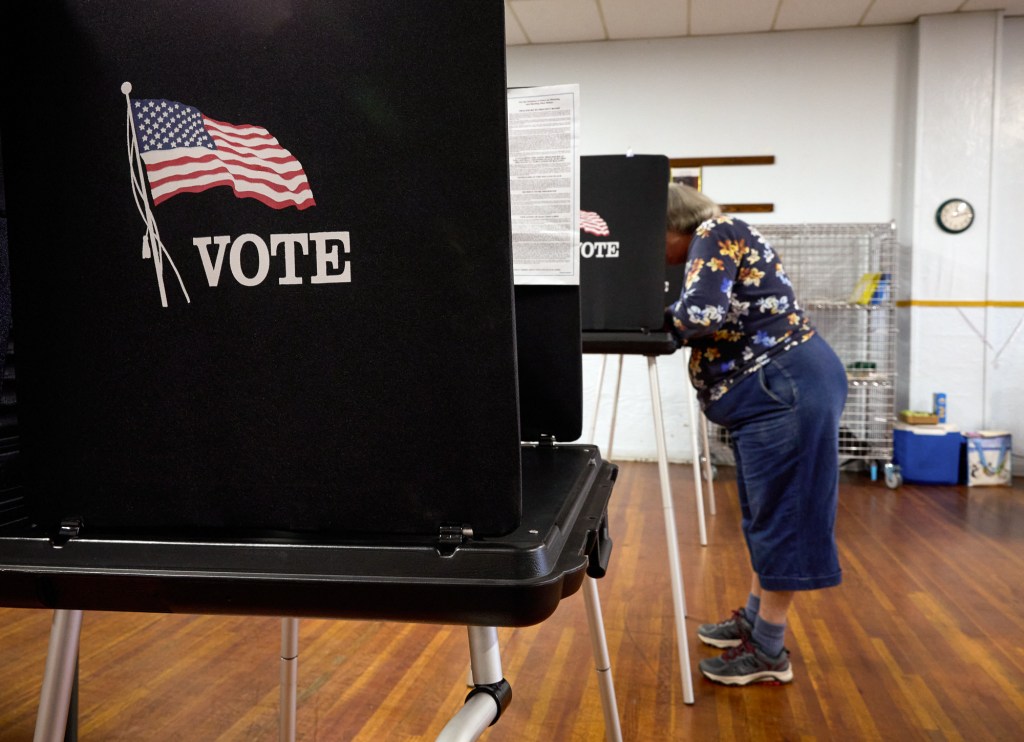
With polls showing a national election that’s closer than ever, it can be tempting to appreciate the predictability of California’s politics.
Unlike the gridlock and dysfunction that has plagued Congress for two decades, control of California’s state legislature doesn’t routinely see-saw between Democrats and Republicans. One party has dominated our legislature for 60 of the last 65 years.
This stability, while perhaps offering relief when compared to our chaotic national politics, helps mask a deeply problematic institutional reality: Our state’s representative democracy isn’t that representative.
Consider the election. At the moment, Democrats make up 76% of California’s state legislature. Of the 100 seats up for election this year, Democrats are favored to win the vast majority and will likely enter their 29th straight year of legislative control.
Interestingly, while such prolonged single-party dominance of the Legislature might suggest Californians’ approval of its performance, that isn’t necessarily the case. According to the Public Policy Institute of California, the state Legislature’s approval rate is currently 47%, and 55% of Californians actually believe the state is heading in the wrong direction. Additionally, a majority (54%) of California’s registered voters are either Republicans (25%), independents (22%) or members of a minor party (7%).
What these discrepancies reveal is that California is experiencing a quiet crisis of oversimplified representation. While the Democratic Party may vaguely represent California’s liberal character, the chief reason it continues to control our legislature is simply because most voters refuse to put the Republican Party in power.
Yet voters’ incentive to select the lesser of two evils has restricted the political competition necessary to help keep Democrats accountable. As a result, our state government is failing to address Californians’ most critical needs, and an increasing share of Californians are struggling to get by.
Considering California’s economy is fifth largest in the world and the Democratic Party has controlled our state legislature for nearly seven decades, such high rates of economic pain are inexcusable. There’s nothing stopping Democrats from enacting the transformative policies they’ve campaigned on.
This isn’t lost on voters. Frustration with both parties is growing: 55% of Californians have an unfavorable view of the Democratic party and 75% have unfavorable views of the Republican party.
In this light, California’s political stability seems more like a reflection of voters’ toleration of — rather than appreciation of — the Democratic Party.
So, where does California go from here? Polling offers a clue: 72% of Californians believe a third party is needed. But in order to increase the number of parties representing voters, structural change is required.
Broadly speaking, there are two election systems that most countries (and states) use to elect their legislatures: winner-take-all and proportional representation. Winner-take-all elections, which we use for U.S. Congress and all 50 state legislatures, tend to generate legislatures dominated by two major parties.
Most advanced democracies, on the other hand, use proportional representation, a system whereby a party’s share of votes in an election earns it a share of seats in the legislature. Proportional representation makes room for more political parties, producing multiparty governing coalitions that better represent voters’ diverse interests, encourage compromise and coalition-building among parties and, as a result, produce more responsive policies.
As our two-party system grows increasingly dysfunctional, a growing chorus of American political scientists and democracy scholars are voicing support for proportional representation. While most of the arguments naturally focus on Congress, where most of our political dysfunction lies, our state legislatures present perhaps the most promising opportunities for reform.
California, with our uniquely powerful ballot initiative, is well positioned to lead this charge and become the first multiparty U.S. state.
So while this month’s election will surely produce yet another single-party dominated state legislature, for Californians exhausted by our national duopoly, dissatisfied with our statewide monopoly and yearning for a truly representative democracy, the path forward is clear: We need more parties. We need proportional representation.


